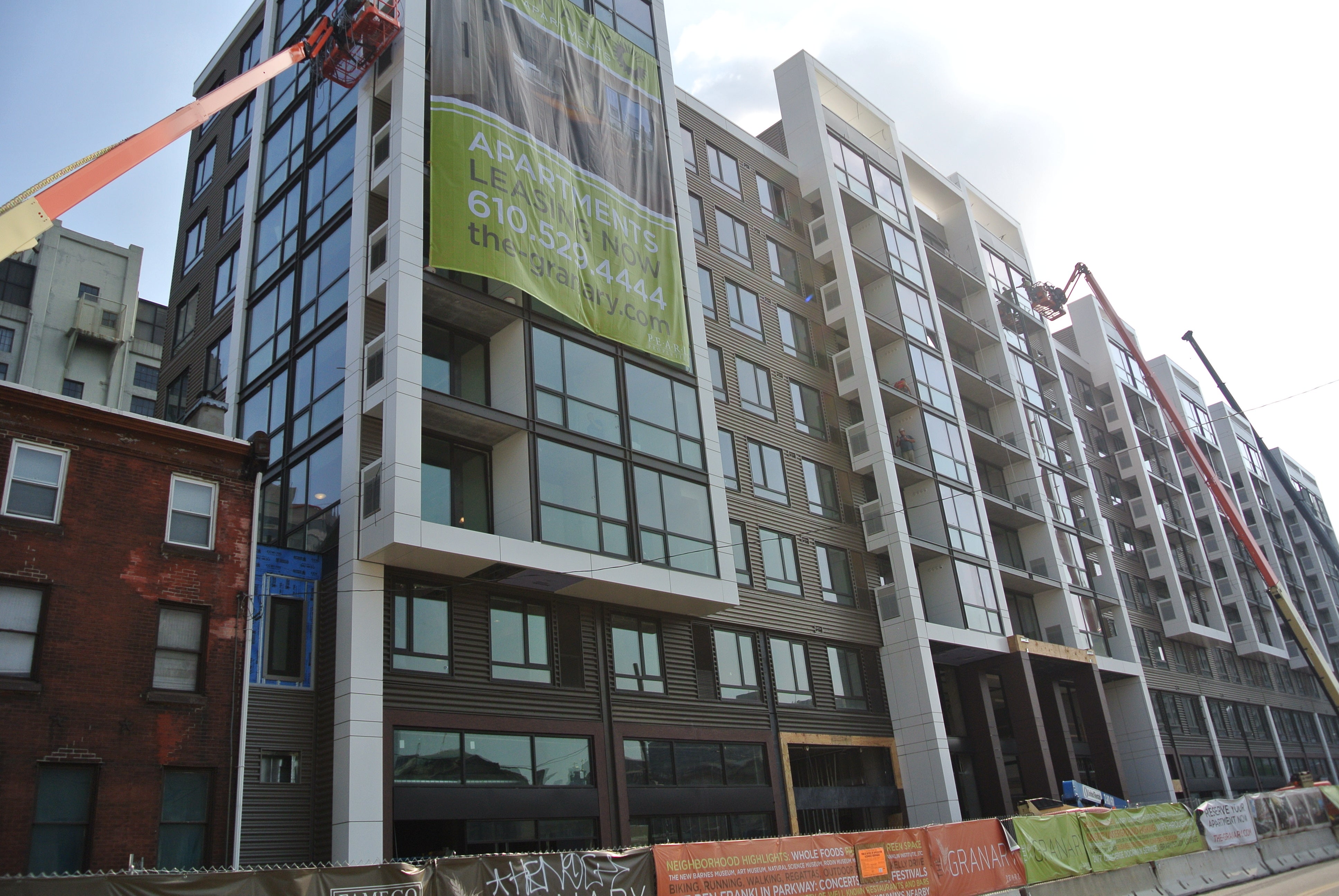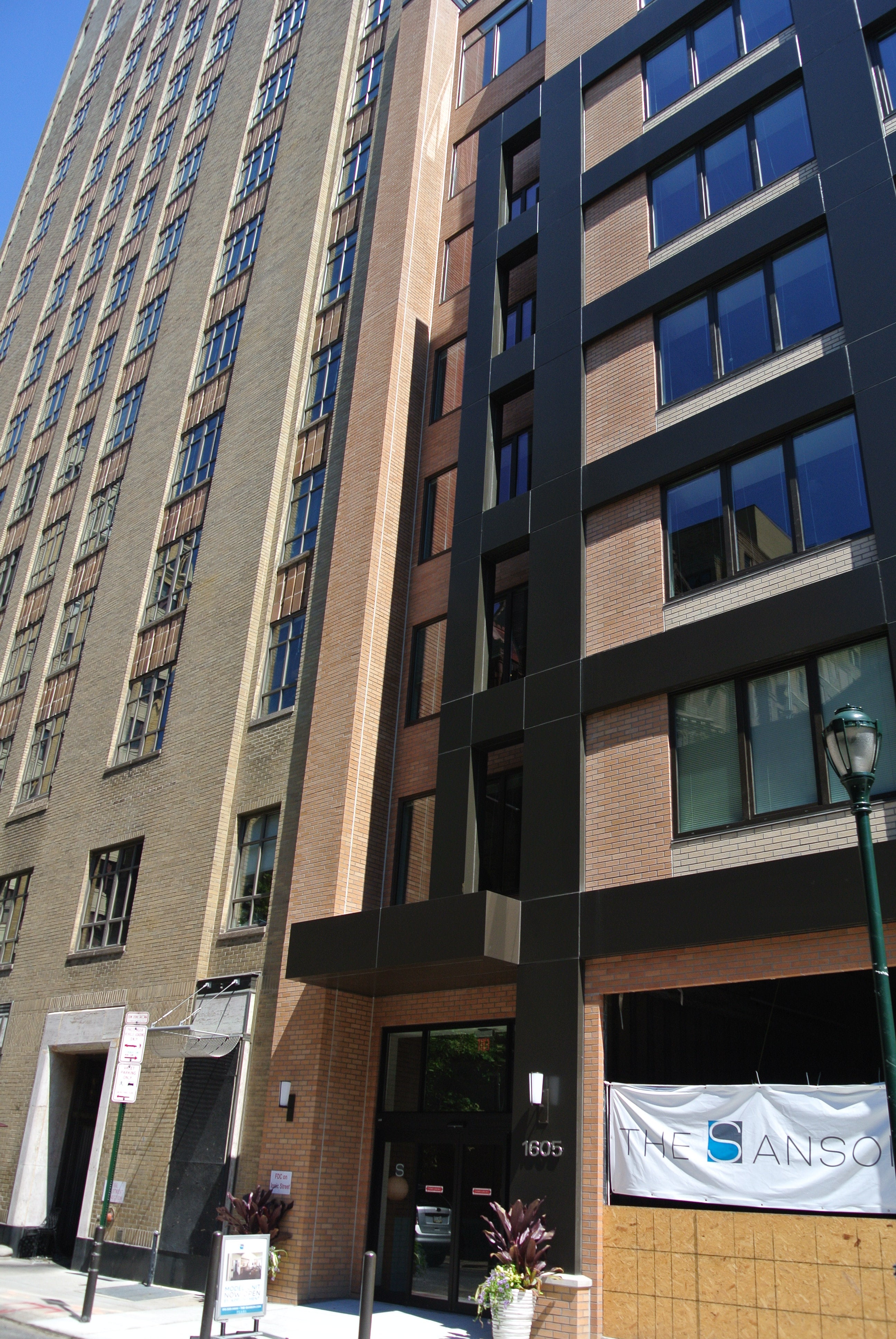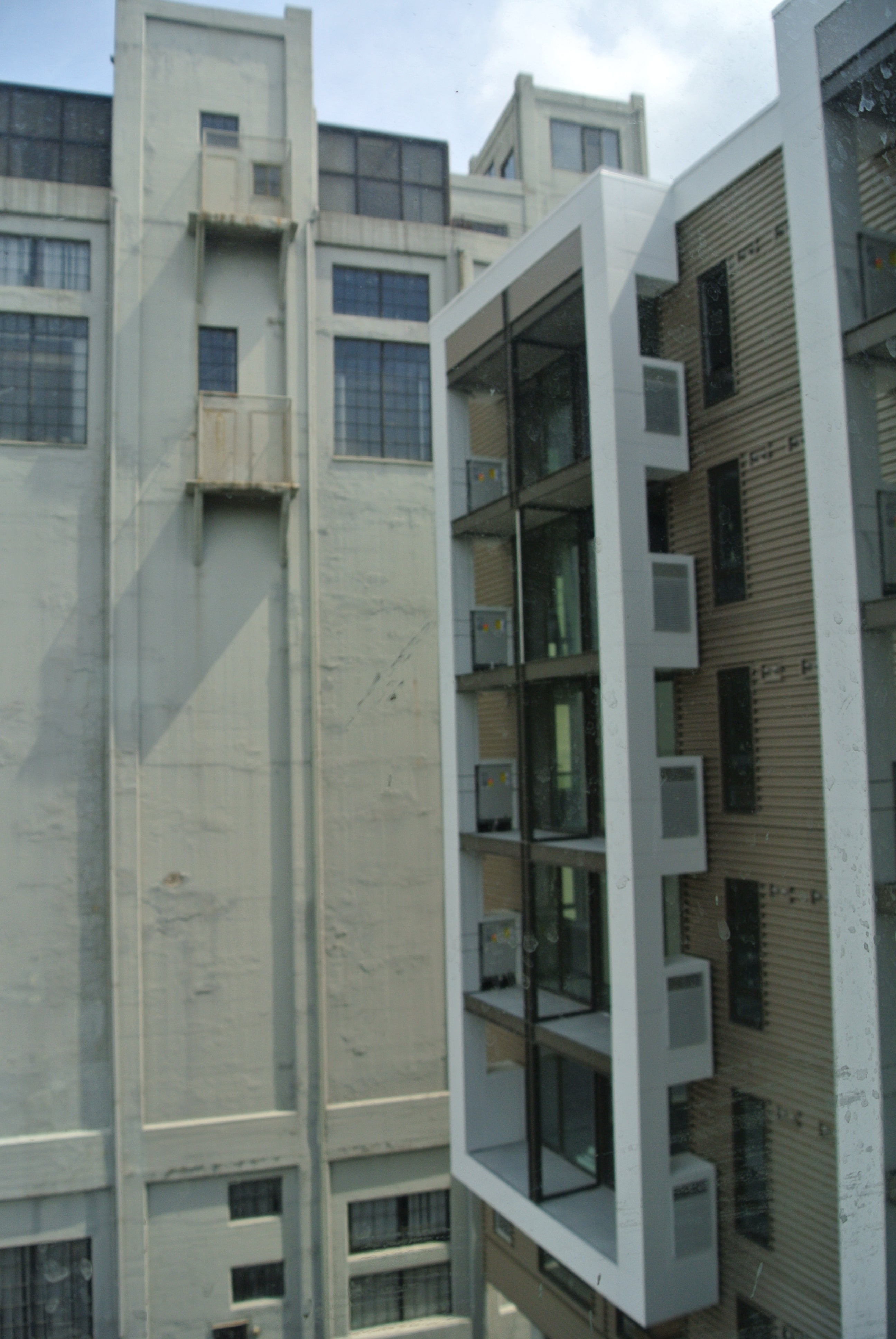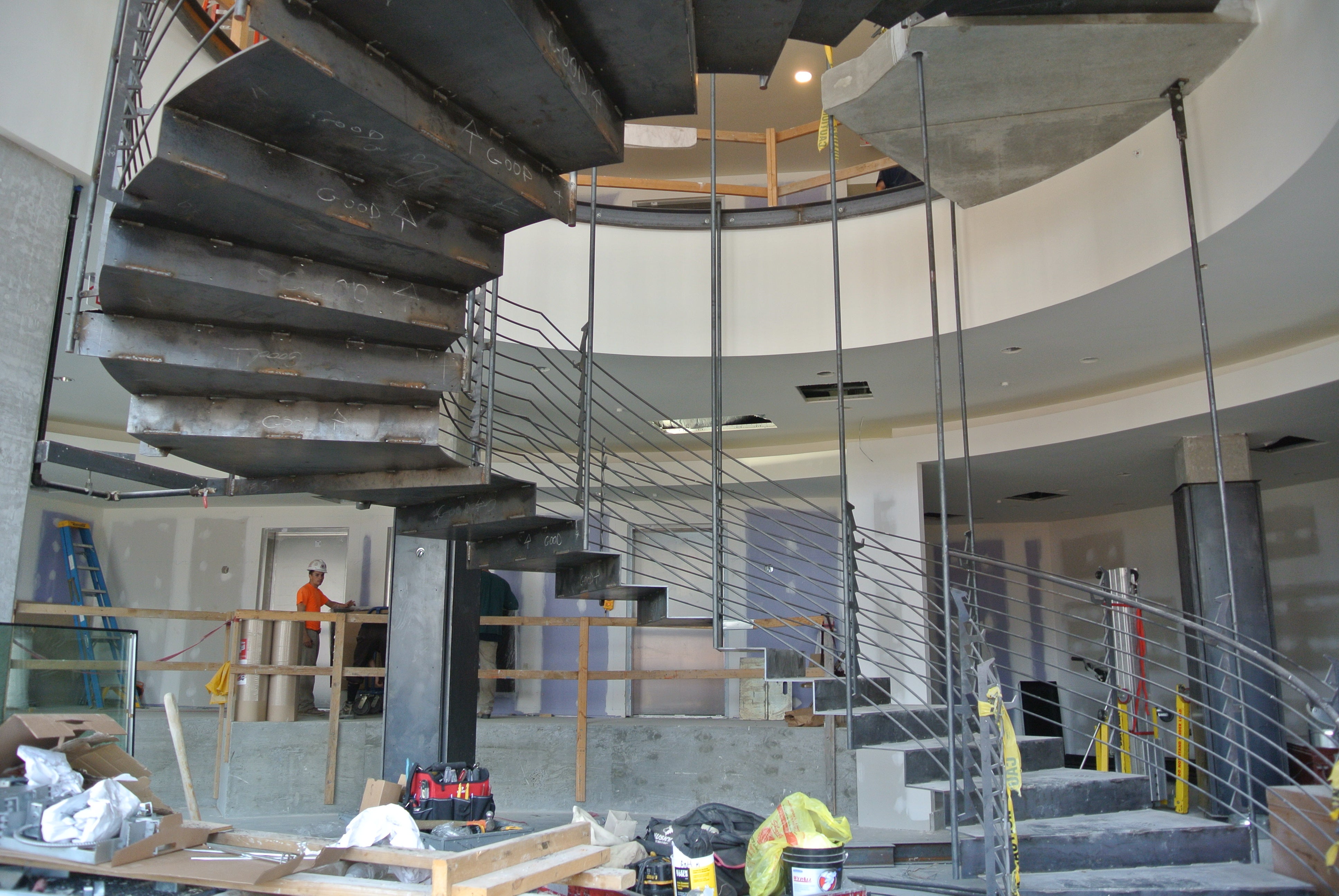New apartment buildings from Pearl and DAS Architects

Have you noticed? Center City is in the midst of (another) residential rental boom. Noteworthy projects include the conversion of the nationally- and locally-registered historic Art Deco tower, 1616 Walnut St., into the not-so-modestly named, Icon; the Carl Dranoff new-build, Southstar Lofts, at Broad and South; and the retrofits of the Atlantic Building at Broad and Spruce and of the Goldtex shoe factory in the Loft District, both courtesy of Post Brothers.
Toss in two more — The Sansom and The Granary, each situated on especially closely-watched parcels — and the total new apartments add up to around 1,000 units coming online in the next few months. Developed by Pearl Properties, the Sansom and Granary are designed by an under-the-radar firm, DAS Architects, best known in town for its restaurant work (Union Trust, a re-do of Le Bec Fin) and, beyond the region, for its specialty in hospitality design.
It makes sense that Pearl turned to them, says Dave Schultz, co-founder and principal with his wife Susan Davidson. “They wanted that sense of excitement that you get from a cool hotel lobby or restaurant from their public spaces,” he observes.
That’s especially the case with the 227-unit adjunct to The Granary that DAS has built across the street from The Barnes Foundation. (The firm will also handle the retrofit of the original 1862 granary, which calls for another 25 apartments to be located in its upper portion. Schultz says the decision was made to complete the new build first to get major construction and disruptions out of the way for all tenants.)
According to Schultz, the new building takes inspiration from the hulking older building, evident in motifs like the series of vertical frames on the Callowhill facade that echo the rectilinear planes of the original and break up the horizontal rhythms of the new structure. In between the concrete Granary and the shimmering champagne-hued corrugated metal of the new building’s exterior, a rusticated Cor-ten element weaves a winding sculptural path along the driveway to underground parking, all the while serving as fencing, screening, and planter walls.
Dramatically highlighted by a sweeping spiral metal staircase that floats to a mezzanine, the lobby sits at the intersection of most of the 20,000-feet of amenities and gathering spaces offered by the building. The two-tiered assemblage of public spaces includes a lobby lounge, fitness center, library/music room, business center, and an 8,000-square-foot rooftop terrace on the eighth floor with sweeping views of the Parkway and downtown. The promise of ground floor retail includes a big box pet store that will offer daycare and grooming services.
Inside, the apartments continue to merge industrial robustness — exposed concrete walls and ceilings — with mod-cons like bamboo flooring and open-shelved kitchens. About half of the units have balconies, and penthouses on the ninth floor have access to their own private terraces.
The move toward residential architecture and design might be relatively new for DAS — the firm is also currently finishing up an interior renovation of the classic Art Deco apartment building, The Touraine — but it’s a logical step for the full-service firm, which was established in 1990. Offering complementary skills, the couple typically divides up tasks nicely, with Schultz helming architecture and space planning and Davidson handling interiors. (Her penchant for mixing distinct one-of-a-kind pieces with off-the-shelf ones is shown to great advantage in the tempting model apartments on view at The Granary.)
Next up for the firm comes another slight departure — this time into retail as it helps convert Old City’s Corn Exchange building (and once a set of MTV’s “Real World”) into a gourmet grocer, housewares purveyor, and cafe. (“Think Eataly,” says Schultz.)
“For a long time, hotels have been taking their cues from luxury living,” observes Schultz. “Now, the best residences want to offer all that a cool hotel does.” While the developer and his design team have envisioned The Granary as right for a certain affluent urban dweller who values the site’s proximity to Whole Foods and the city’s top cultural attractions, the 104-unit Sansom is aiming for a hipper renter, one who wants to line up for fried chicken at Federal Donuts across the street or toss back brine and brew down the block at Sansom Street Oyster House.
The Sansom now occupies a troubled lot that had been used as surface parking for about a decade, following the demoliton of a group of 19th-century vernacular buildings okayed by the Historical Commission (which was then chaired by developer Wayne Spilove who was part of the group seeking demoliton).
Unlike The Granary, this new apartment building offers no parking — a concession to true urban living and a nice rebuttal to Spilove and Co. In other ways, though, the new structure bears a superficial resemblance to the team’s Granary project. Both rely on a grid pattern, for example, although The Sansom is constructed chiefly of an orange brick that pairs nicely with that of its neighbor, the Architect’s Building. And inside, exposed concrete, steel beams and reclaimed wood make for a less grand but similarly rustic feel. Although it lacks the sheer wealth of public spaces found at The Granary, The Sansom too features a terrace with great views and a small fitness center and lounge, all on the 7th floor. An Adolf Biecker spa and salon is slated to occupy the ground floor storefronts.
Spas, business centers, pet daycare? It all sounds suspiciously like the best goodies offered by the best hotels. “Hotels have become known for catering to creature comforts,” Schultz says. “These new apartment buildings are doing the same. It’s what today’s tenants expect.”
According to the Pearl web site, both The Granary and The Sansom start at $1,895 for one bedrooms.
WHYY is your source for fact-based, in-depth journalism and information. As a nonprofit organization, we rely on financial support from readers like you. Please give today.







